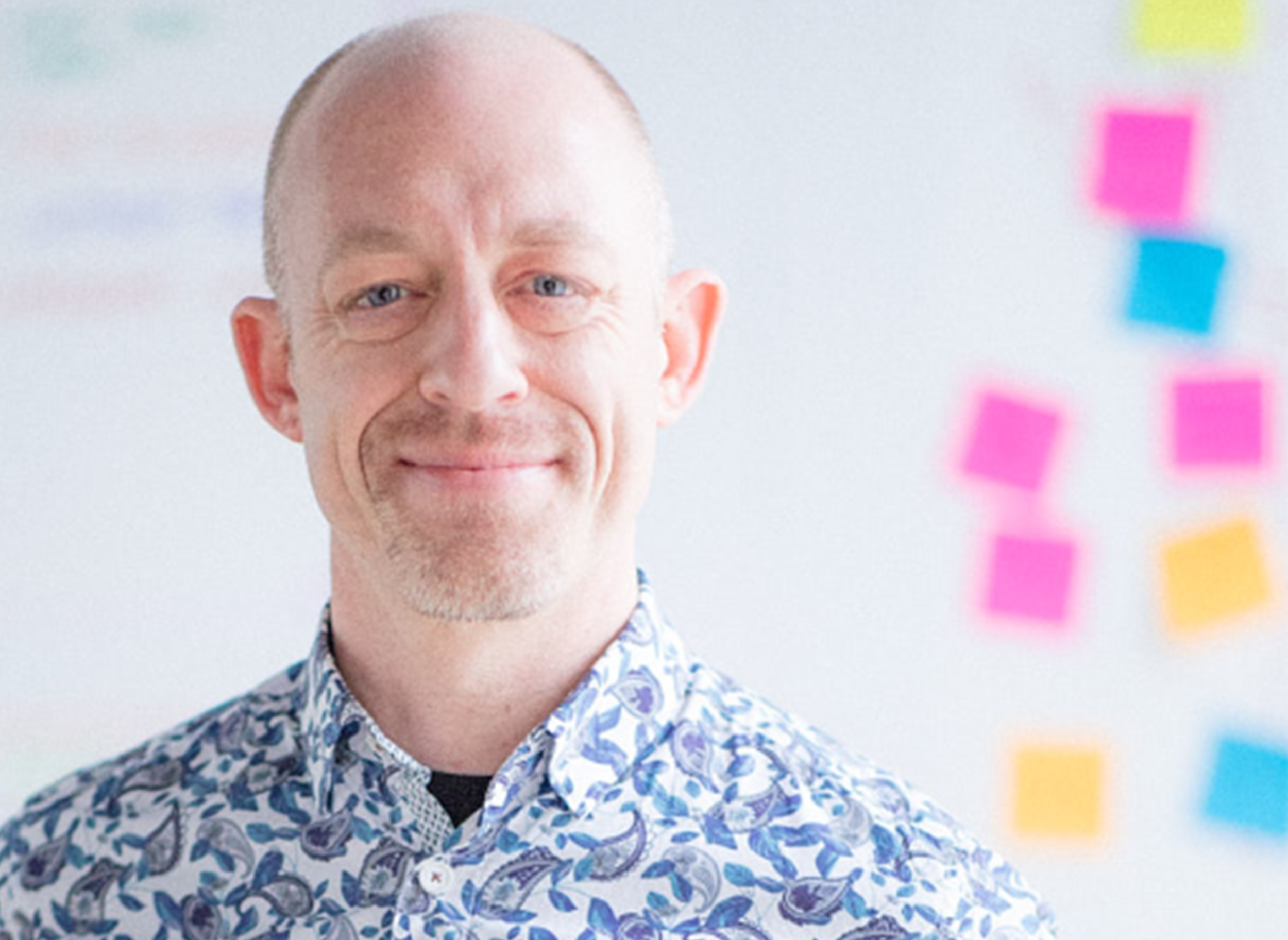So many businesses are speaking about the need for more innovation in their organisations, even naming it as a strategic priority, but I am not convinced they know where to begin when it comes to giving people the permission and tools to integrate creative practices into the day-to-day. In the world of risk, there is a lot that can be done to shake up the way we manage risk – shifting from reliance on legislation with an aim to achieve compliance to enabling businesses to take intelligent or considered risks in a healthy and safe way in the name of continuous improvement.
At Acre Frameworks, one of our core beliefs as a learning and development consultancy is creativity so I want to dedicate this article to exploring practically how we enable innovation in businesses. I could not think of a better person to get insight from than John Monks.

John is an expert facilitator who has built a career in individual, team and organisational change, transforming many of the world's leading organisations. He established Curve in London and New York as well as a global Digital Business Design consultancy for Digitas. He is a qualified and experienced team and executive coach. John is excited by innovation, creativity and helping others to achieve what they're capable of by coaching and facilitating teams.
Outside Curve, John is a co-chair of the board of ActionAid, working with the poorest women and girls in the world, changing their lives for good and founded a Co-Working space in Cambridge.
In John’s words:
“We believe that everybody is creative and that everybody has the ability to come up with great new ideas and to solve their own problems. We created Curve so that we could give people the skills and confidence that they need to do just that”.
We’ll explore through an interview I did with him exploring how businesses can get the ball rolling when it comes to leading with creativity! As a professional coach myself, I think having confidence in your creative abilities is a big pain point for many... A lot of people have creative wounds. They have been told by others, or convinced themselves, that they just aren’t a creative type. The Co-Active coaching methodology I trained in has a cornerstone that really drew me to their approach: People are naturally creative, resourceful, and whole. It has been truly inspiring for me to carry that with me as a coach! Naturally, John and I started by addressing how he works with people to break down this type of self-limiting belief:
“We believe in a coaching approach to our work. This means that we believe that all people have what they need within them, or close at hand, to do what they need to be able to do. I'm also a huge fan of the growth mindset that Carol Dweck invented. With the growth mindset you take the view that it's not that you can't do something, it's that you can't do it YET.
What this means in our workshops is that we will often create activities like drawing for example, where we give people a task to complete and very little time. What we often find is that everybody, even professional illustrators, don't do a great job under time pressure and that shows everyone that there is a base level of competence... The rest is practise”.
Since we are coming at this topic through the lens of Health & Safety, John and I touched on the fact that risk management can seem to be at odds with creativity on paper – reducing/controlling risks versus taking them. So, how can H&S leaders support their teams to have a healthy balance of both in their approach to risk management? John says:
“For me, the key here is ensuring people don't rely on bureaucracy and policy to protect them against accountability for risk. The bureaucratic approach often slows down processes, and business more generally, and therefore constitutes a risk of its own. The goal is to create an environment of psychological safety where people know that they won't be hurt in some way by taking a risk.
Leaders can put in place a very open and direct feedback mechanism where it's clear that people are talking about actions and outcomes, not criticising or blaming. This can really contribute to people being open to taking risks rather than playing it safe. The feedback process, when done early and often, will also ensure that the risks are minimised because you'll be sourcing well-rounded opinions from around the business”.
John and I also spoke about how putting ideas into words can reduce our creativity capacity due to their inflexibility, which I feel is very relevant to the way H&S policies and procedures are communicated within businesses. I hear so many of my clients express frustration overcoming into a new business and inheriting never-ending documents that they would not even want to bother to read! No wonder people can end up running for the door when they hear the words ‘health and safety’. Here’s John’s thoughts:
“Imagine this on one side of your desk: You have a paper print out of the specification of a car... I don't know how long that would be, but it probably has hundreds of thousands of components and millions of individual instructions. On the other side of your desk you've got a sketch of a car. You want to make some changes to the car’s design – which one do you think would be easier? This illustrates quite literally how using visuals rather than verbal language in the innovation process is more accessible and more agile. It's also very well known that people consume information thousands of times more quickly visually than they do verbally, as well as retain the information better. Accordingly, in terms of communicating policies and procedures to people, a visual will be much better than a manual”.
I then posed the following statement to John: ‘What stands in the way becomes the way’. I asked him to comment on how this relates to creativity:
“I think this is a perfect time to answer that question. Just think about how many things were considered impossible at the start of March before the COVID-19 crisis hit in the UK that are now everyday activities for so many people! The old saying goes that ‘necessity is the mother of invention’, and this is how I think of how innovations can help businesses take challenges and reframe them into opportunities that will make them leaders in their field”.

I truly could have spoken to John about this topic for hours, but I think the most resonant part of our conversation was the connection between relationship building and the creative capabilities of businesses. I would confidently assert that relationships are the foundation of dialogue so it is not enough to just get people in the same room to foster an environment where creativity can thrive. John shared the follow thoughts on the intersection between human connection and creativity:
“Everything ever created by human beings has been the result of multiple people's ideas joined together. The very best ideas, even the ones which are associated with a single genius, will often have huge teams of people behind them who have been collaborating for years. In order for people to build on one another’s ideas, as opposed to getting stuck or knocking them down in an argument, you need trust and empathy. With that trust in place, people feel free to share ideas; they feel open to taking creative and constructive criticism, and together an energy is built which propels ideas forward way more quickly than they would happen if it was one person working solo".
I’d like to leave you with a call to action after all of this great food for thought from John: In your business, what is one step you can take off the back of reading this to enable more innovation?
Is it tackling collective self-limiting beliefs about creativity?
Is it upskilling your leaders with a coaching skill set?
Is it taking on the challenge of reducing bureaucracy?
Is it changing your style of communication?
Is it telling stories about how challenges can be made into opportunities to be more creative?
Is it focusing on relationship building?
Maybe it’s more than one, but I invite you to have a bias for action when it comes to this ever-important topic! Happy creating.
This article was originally written for and published in Safer Highways England's7th Edition of their SHL!ve Magazine.


